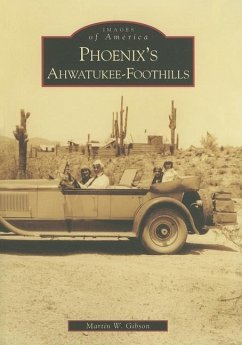South of Phoenix's South Mountain, west of Interstate 10, north of the Gila River Indian Community, and east of Arizona state land lies the picturesque village of Ahwatukee-Foothills, home to some 87,000 people. Its proximity to adjacent cities, cultural centers, shopping, and dining combines with these natural boundaries to give the area its beautiful topography, sense of peaceful isolation, and high desirability as a great place to live, work, and play. But long before there was a freeway, the area was part of the Kyrene farming community, a rural patchwork of hardy pioneer families typifying the country's agricultural way of life during the first half of the 20th century.








